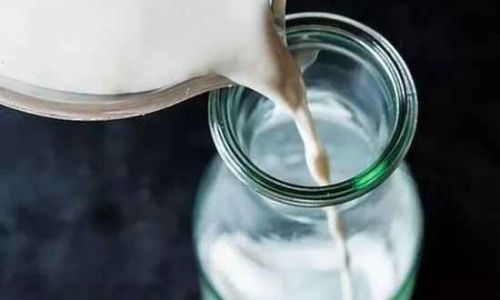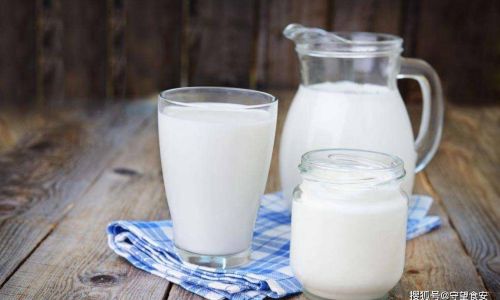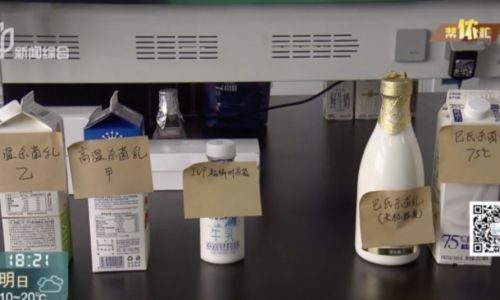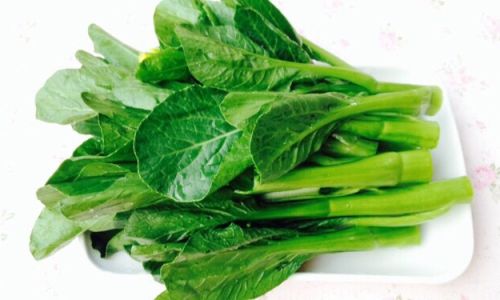Introduction
Milk, a staple in diets worldwide, undergoes various processing methods to ensure safety, extend shelf life, and meet consumer preferences. Two primary categories dominate the market: Ultra-High Temperature (UHT) milk and pasteurized milk. While both aim to eliminate harmful bacteria, their production techniques, nutritional profiles, taste, and environmental impact differ significantly. This article delves into the scientific, cultural, and practical distinctions between these dairy products, offering insights to help consumers make informed choices.
Processing Methods: Heat and Time
The core difference between UHT and pasteurized milk lies in their thermal treatment processes.
Pasteurization: A Gentle Heat Application
Developed by Louis Pasteur in the 1860s, pasteurization involves heating milk to a specific temperature for a defined period to destroy pathogens like Salmonella, E. coli, and Listeria. The most common method, High-Temperature Short-Time (HTST) pasteurization, exposes milk to 72°C (161°F) for 15–30 seconds. This process reduces bacterial loads while preserving most of the milk’s natural flavor, vitamins, and enzymes. However, it does not sterilize the milk, meaning some spoilage microorganisms survive. Consequently, pasteurized milk requires refrigeration and has a shelf life of 1–3 weeks.

UHT Processing: Sterilization Through Extreme Heat
UHT milk undergoes a more intense treatment: heating to 135–150°C (275–302°F) for 2–5 seconds. This ultra-high temperature sterilizes the milk, destroying virtually all microorganisms, including spores. The milk is then packaged in aseptic, hermetically sealed containers (e.g., cartons or Tetra Paks) under sterile conditions. This method eliminates the need for refrigeration before opening, granting UHT milk a shelf life of 6–12 months. The process is often called aseptic processing due to its sterile packaging environment.
Shelf Life and Storage: Convenience vs. Tradition
The most visible difference for consumers is shelf life. UHT milk’s extended durability makes it ideal for regions with unreliable refrigeration or limited access to dairy aisles. It is a cornerstone of food aid programs and emergency supplies. Pasteurized milk, by contrast, is perishable and depends on cold chains—systems of refrigerated storage and transport. This reliance makes it logistically challenging in hot climates or rural areas without electricity.
Environmental Impact
UHT milk’s longer shelf life reduces food waste, a critical advantage in a world where millions of tons of dairy products are discarded annually. Additionally, its ability to be transported without refrigeration lowers carbon emissions associated with cold logistics. However, the aseptic packaging used for UHT milk, while recyclable, often faces recycling infrastructure limitations, raising sustainability concerns.
Taste and Texture: The Sensory Experience
The heat applied during processing alters milk’s sensory attributes. Pasteurized milk retains a fresher, creamier taste, as its lower temperatures better preserve volatile compounds responsible for flavor. UHT milk, exposed to higher heat, undergoes Maillard browning—a chemical reaction between sugars and proteins that imparts a slightly cooked, caramelized, or “sterilized” flavor. Some consumers describe it as having a “flat” or “stale” taste compared to pasteurized milk.
Texture Differences
UHT milk may also exhibit a slightly thicker consistency due to protein denaturation during heating. This texture can affect how it performs in coffee, tea, or cooking. For instance, UHT milk is less likely to curdle in acidic beverages, a trait valued in some culinary applications.
Nutritional Content: Heat’s Toll on Vitamins
Both processes reduce heat-sensitive nutrients, but the extent varies.
Vitamin Loss
- B Vitamins: UHT milk may lose 10–20% more riboflavin (B2) and vitamin B12 than pasteurized milk due to prolonged exposure to high heat.
- Vitamin C: Both methods degrade ascorbic acid, but UHT milk retains slightly less (up to 15% loss vs. 10% in pasteurized milk).
- Calcium and Protein: Neither process significantly affects these macronutrients, as they are heat-stable.
Enzymes and Bioactive Compounds
Pasteurization inactivates enzymes like lipase and phosphatase, which can cause off-flavors if not controlled. UHT milk eliminates these enzymes entirely. However, some argue that pasteurized milk retains more beneficial enzymes, though their health impacts remain debated.

Fortification Practices
In many countries, both UHT and pasteurized milk are fortified with vitamin D and A to offset losses, narrowing nutritional gaps. Organic or grass-fed variants may offer higher omega-3 fatty acids, but this relates to farming practices, not processing.
Consumer Preferences: Cultural and Regional Divides
Consumer choices reflect cultural norms, historical practices, and marketing.
Europe’s Embrace of UHT Milk
In Continental Europe, UHT milk dominates, accounting for over 90% of milk sales in countries like France, Spain, and Portugal. This preference stems from post-WWII innovations in aseptic packaging, which allowed dairy products to reach rural areas without refrigeration. UHT milk is synonymous with convenience and modernity in these regions.
North America’s Preference for Pasteurization
In the United States and Canada, pasteurized milk holds a 95% market share. This dominance is tied to historical reliance on refrigeration, dairy farming traditions, and consumer associations of UHT milk with “long-life” or “shelf-stable” products, often perceived as less fresh.
Emerging Markets
In Asia and Africa, UHT milk is gaining traction due to urbanization, rising incomes, and infrastructure gaps. Brands like Nestlé and Danone have invested heavily in UHT production lines to meet growing demand.
Health and Safety: Beyond the Expiration Date
Both processes ensure milk is safe to consume, but their approaches differ.
Pathogen Control
Pasteurization reduces bacterial counts to safe levels but does not sterilize the product. If refrigeration fails, spoilage organisms can proliferate, causing souring or curdling. UHT milk’s sterilization eliminates this risk, making it a safer option in areas with unreliable cold chains.
Lactose Intolerance and Digestibility
Neither process affects lactose content significantly. However, some individuals with lactose sensitivity report better tolerance with UHT milk, possibly due to altered protein structures. This anecdotal evidence lacks robust scientific backing but highlights the need for personalized dietary choices.

Allergen Concerns
Both types retain milk proteins like casein and whey, so they are unsuitable for those with dairy allergies.
Economic Factors: Cost and Accessibility
UHT milk often costs less to produce and distribute. Its extended shelf life reduces waste, and aseptic packaging is lighter than glass bottles, lowering transportation costs. However, in markets where pasteurized milk is the norm, UHT products may carry a premium due to perceived inferiority.
Small-Scale Dairy Farmers
Pasteurization requires on-site or nearby processing facilities, benefiting local dairies. UHT production, by contrast, demands significant capital for sterilization equipment, favoring large corporations. This dynamic has sparked debates about industrialization versus artisanal dairy preservation.
The Role of Organic and Specialty Milks
The organic milk sector, valued at over $2 billion in the U.S. alone, often prioritizes pasteurization to align with “natural” branding. However, organic UHT milk is available in some markets, targeting eco-conscious consumers seeking shelf stability without synthetic preservatives.
Grass-Fed and A2 Milk
Specialty milks, such as grass-fed or A2 varieties (which lack the A1 beta-casein protein), are typically pasteurized to preserve their unique nutritional profiles. UHT versions are rarer, as enthusiasts argue that high heat diminishes their purported health benefits.
Innovation and Future Trends
The dairy industry continues to refine both processes.
High-Pressure Processing (HPP)
A emerging technique, HPP uses extreme pressure (not heat) to sterilize milk, retaining more nutrients and flavor. However, high costs limit its adoption.
Extended Shelf-Life (ESL) Milk
A hybrid approach, ESL milk uses mild pasteurization combined with advanced filtration to achieve a 45–60-day refrigerated shelf life. It bridges the gap between UHT and traditional pasteurized milk.

Plant-Based Alternatives
While not dairy, the rise of oat, almond, and soy milks—often sold in aseptic packs—mirrors UHT’s convenience-driven model. These products are reshaping consumer expectations about shelf life and processing.
Misconceptions and Controversies
Myth 1: UHT Milk Is Less Nutritious
While some vitamins degrade more in UHT milk, the difference is negligible for most diets. Fortification and balanced nutrition render this concern largely moot.
Myth 2: Pasteurized Milk Is “Raw”
No. Pasteurized milk is heated, unlike raw milk, which is unprocessed and poses significant health risks.
Myth 3: UHT Milk Contains Preservatives
Aseptic packaging, not chemical additives, preserves UHT milk. This misconception persists due to its long shelf life.
Conclusion: Choosing the Right Milk for You
The debate between UHT and pasteurized milk hinges on individual priorities:
- Convenience: UHT milk’s shelf life and no-refrigeration requirement suit travelers, small households, or those without reliable cold storage.
- Taste and Tradition: Pasteurized milk appeals to purists who prioritize fresh, creamy flavor.
- Environmental Impact: UHT milk reduces food waste and cold-chain emissions, but its packaging warrants recycling.
- Cost: UHT milk often offers better value in regions with high refrigeration costs.
Ultimately, both products are safe, nutrient-rich, and testaments to human ingenuity in food preservation. As global demands evolve, the dairy industry will likely see further innovation, blending the best of both worlds. Whether you prefer your milk chilled and traditional or shelf-stable and modern, the choice reflects a fascinating intersection of science, culture, and personal preference.






0 comments